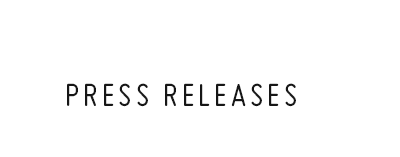- 5 FIFTEEN
- ACTEGA
- ACTEGA METAL PRINT
- ACTGreen
- ADOBE
- BALDWIN TECHNOLOGY
- BALDWIN VISION SYSTEMS
- BCN3D
- BESPOKE
- CONTIWEB
- CRON
- DIGITAL DOT
- DSCOOP
- FRONTLINE
- GALLUS
- GIRLS WHO PRINT
- GOSS
- HIGHCON
- HP
- INGENTA
- J-TECK3
- KIIAN
- MIMAKI
- PRESSTEK
- PURE DIGITAL
- QUADTECH
- ROTOLITO LOMBARDA
- SAi
- SCODIX
- SCREEN
- SOLIMAR
- TONEJET
- URW TYPE FOUNDRY
MY LOVE OF THE PRINTED BOOK – A GREATER CONNECTION
By Julia Simsion
This time last year I was tasked with writing a blog piece about my love of the printed book. And now with sales of the physical book on the increase for the third year running, what better reason to revisit my justifications for why I’m just as determined not to succumb to buying an e-book.
From a professional viewpoint, I’ve seen companies like our client, Screen, benefiting from this upward trend, with its Truepress Jet520HD High-Definition Inkjet Web Press being sold to both publishers and book printers.
On a more personal level, however, I will admit to being slightly relieved that I’m not alone with the feelings of satisfaction I get from reading a physical book. I thought that I was perhaps an old-fashioned reader in modern times! However, The Guardian reported last year that it’s actually the younger generation who are steering the way in buying printed books and another report sites “screen fatigue” as a reason why people are turning their backs on reading e-books. So, in the digital world that we now live in, reading a paperback appears to be a welcome break from devices and social media, where distractions from incoming calls, messages, emails etc. can stop you from being totally immersed in a good story.
In my previous blog I explored the reasons why my holiday read will always be a printed book but my joy in selecting and reading the physical version is something I look forward to doing all year round. I love nothing more than browsing the shelves in a book shop to find something that appeals to me. Although I usually have an idea of the genre of book I’m wanting to buy, it’s interesting to look at the variety of covers and designs, and imagining what stories, messages and settings an author is trying to visually communicate. If I like what I see, I’ll skim over the back of a book or the inside cover and then if that holds my attention further, I’ll read the first page or two. Browsing thumbnails on a small screen just doesn’t provide the same impact and nor are you reminded of the artwork once you start reading.
In writing this and thinking about it, it’s also not until recently that I fully appreciated the variety of fonts that printed books use and just how few fonts their digital counterparts have to offer, which is strange given how so many other computer applications use different typefaces. Regardless of whether I’m reading my recently purchased novel or flicking through a cook book to find a recipe for a family dinner, for me, the font used can be one of the most defining features of the printed book. Not only can it dictate the style and genre, it can also influence the legibility of the text too. E-books on the other hand, although providing the functionality to increase the font size, create a certain sameness in their limitation of font selection.
Being a parent, I think that reading a physical book also sets a good example to my children. It’s immediately transparent what I’m doing when I’m reading my latest novel. Unlike when I’m looking at a digital device, usually indulging in another of my past times – online shopping. This is another activity that has changed over the years from paper to digital. I remember as a young girl flicking through the pages of a glossy Kays or Littlewoods catalogue and marking up pages with the latest fashions, and often ripping them out to stick to the fridge as a subtle hint to mum!
Nowadays, instead of sharing those catalogue pages with my mum, I love passing to her a printed book that I’ve just finished reading and have loved. There’s just something so much more personal in handing over a physical book and being thanked for lending such a wonderful read, as opposed to recommending a story to download. A physical item that gives me a sense of connection and even takes me on a journey. An e-book would deprive me of this joy.
And if a friend or family member doesn’t want my book, I can take a wander to the local charity shop to extend its life whilst making money for a good cause. On the flip side, there’s nothing nicer than discovering a good read when you’re least expecting it. This has happened to me on a couple of occasions whilst visiting a hotel or B&B and browsing the ‘free to borrow and replace’ book shelves. And, when reading any one of these books, I have not had to worry about the battery suddenly running out of life just as I’m reaching the climax of the story!
That’s the thing with printed books – they have a history to them or, forgive the pun, a story behind them. Yes, there’s now an option to fit War and Peace in your pocket but once read, will it remain on an e-reader? Unfortunately, I will probably never come close to seeing the Gutenberg Bible or, in fact, any of the oldest known surviving books in the world, but they are there as visible and tangible evidence that a printed manuscript can survive the test of time.
When all is said and done, I think for me, there’s just a psychological satisfaction in holding a physical object instead of a string of code and I can honestly say that I don’t see that changing………ever.




